Where to go in Russia other than Moscow and St. Petersburg

If you’ve already maxed out on the twin capitals, we suggest probing Russia's depths and exploring its incredible nature and places where legendary saints lived and almighty battles were waged.
1. Suzdal
Just a couple of hours' drive from Moscow will plunge you headfirst into the atmosphere of old Russia. A world of small streets and wooden houses — all wonderfully homely and inviting. Here, you will stumble over an ancient church at every turn, and the whole city is doable on foot in a single day. Suzdal is part of Russia’s Golden Ring — a circle of ancient towns and cities to the north-east of Moscow that all predate the capital and all with a rich history. If you have time, we recommend trips to Yaroslavl, Kostroma, Uglich, Vladimir, Sergiev Posad, Rostov Veliky (don’t confuse with Rostov-on-Don) and Pereslavl-Zalessky.
Perfect snap (Suzdal Kremlin):
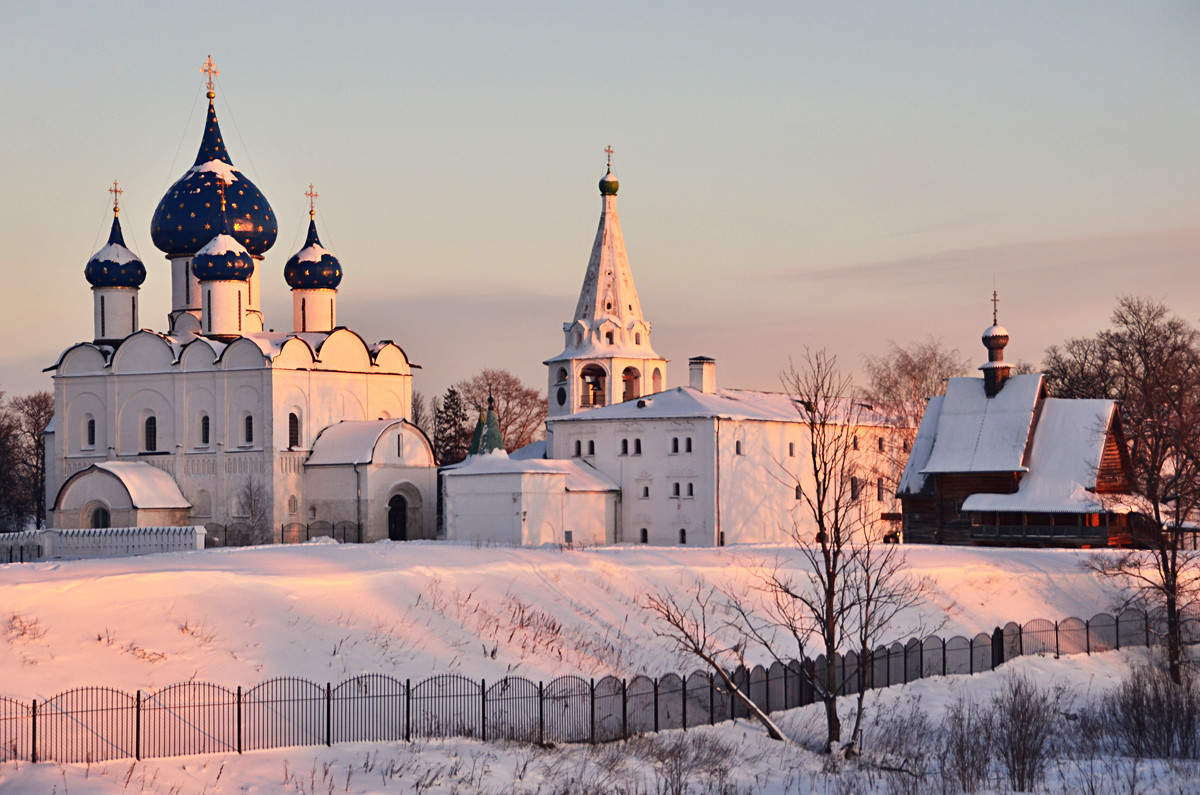
How to get there: From Moscow to Vladimir by train, then by shuttle bus
When to go: The best time is winter, just before New Year or Maslenitsa (Shrovetide, in 2020 it will be February 24 – March 1). The mood is jolly with folk festivals, fairs, dances and street food, especially pancakes! Be sure to dress warm. If you do get cold, you’ll be offered a cup of Russia’s national low-alcohol drink: mead. For teetotalers, there’s tea or traditional sbiten.
When NOT to go: The first ten days of January and the first ten days of May (these are official holidays in Russia when all hotels will be booked up or extortionately expensive).
What to see: Museum of Wooden Architecture, Suzdal Kremlin, the shopping arcade, Resurrection Square, Savior Monastery of St Euthymius
Where to stay: In a private house/cabin or hotel, for example, Pushkarskaya Sloboda.
Where to eat: Uley restaurant (better to book in advance)
2. Nizhny Novgorod
Sited aloft a picturesque spit on the Volga and Oka rivers, this city offers an unusual blend of antiquity (small, tilting wooden houses) and modernity (trendy bar-restaurants and new buildings). Nizhny Novogorod is also the birthplace of writer Maxim Gorky. In Soviet times, it bore his name, and there are three museums dedicated to him.
Perfect snap (view of the spit):
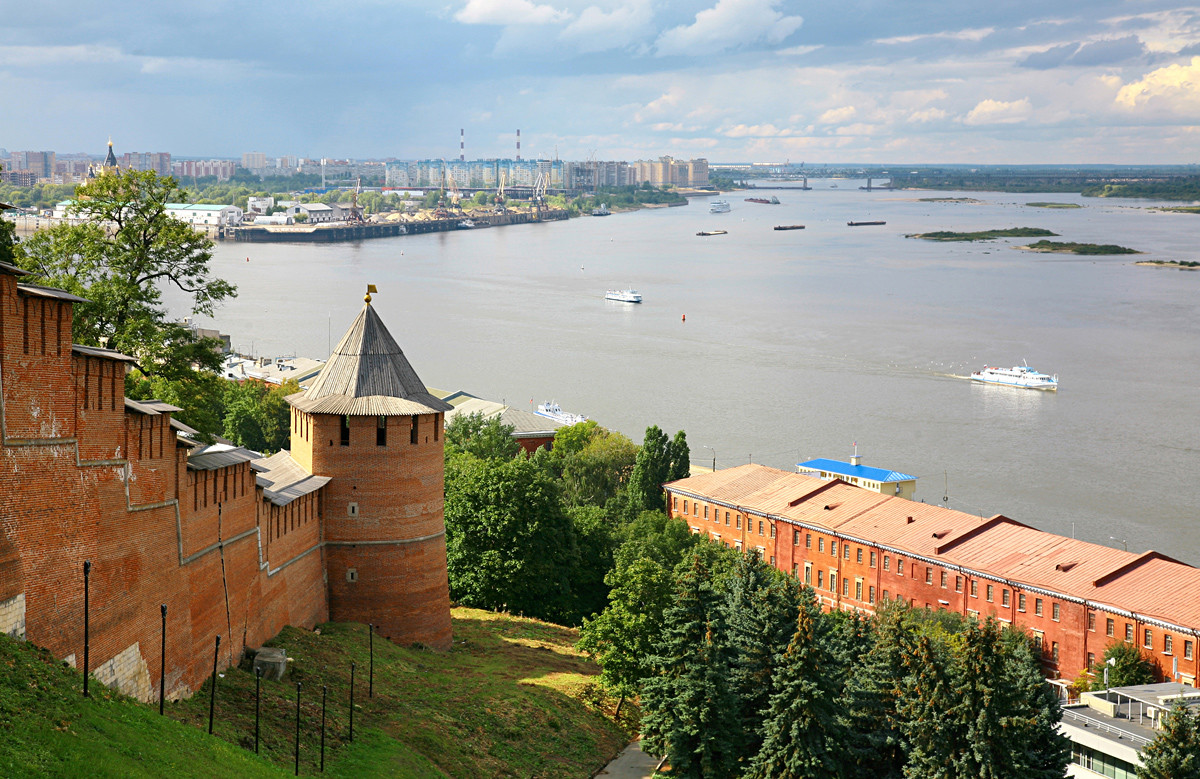
How to get there: On the Lastochka or Strizh high-speed trains from Kursk Station in Moscow.
When to go: April – October
What to see: Nizhny Novgorod Kremlin (and the Arsenal Museum of Contemporary Art inside the kremlin), Chkalov Stairs, Nizhnevolzhskaya Naberezhnaya street, Rozhdestvenskaya and Bolshaya Pokrovskaya pedestrian streets, the cable car across the Volga, Grebnoy Canal Beach (in summer)
Where to stay: Near Nizhny Novgorod Kremlin; for example, Hotel Pokrovsky Posad
Where to eat: Gorky Brewery gastropub
3. Kazan
Russia is a multiethnic and multireligious country, and the Republic of Tatarstan is a great place to enjoy some oriental flavor.
Perfect snap (the city symbol—the dragon Zilant, and a view of the kremlin):
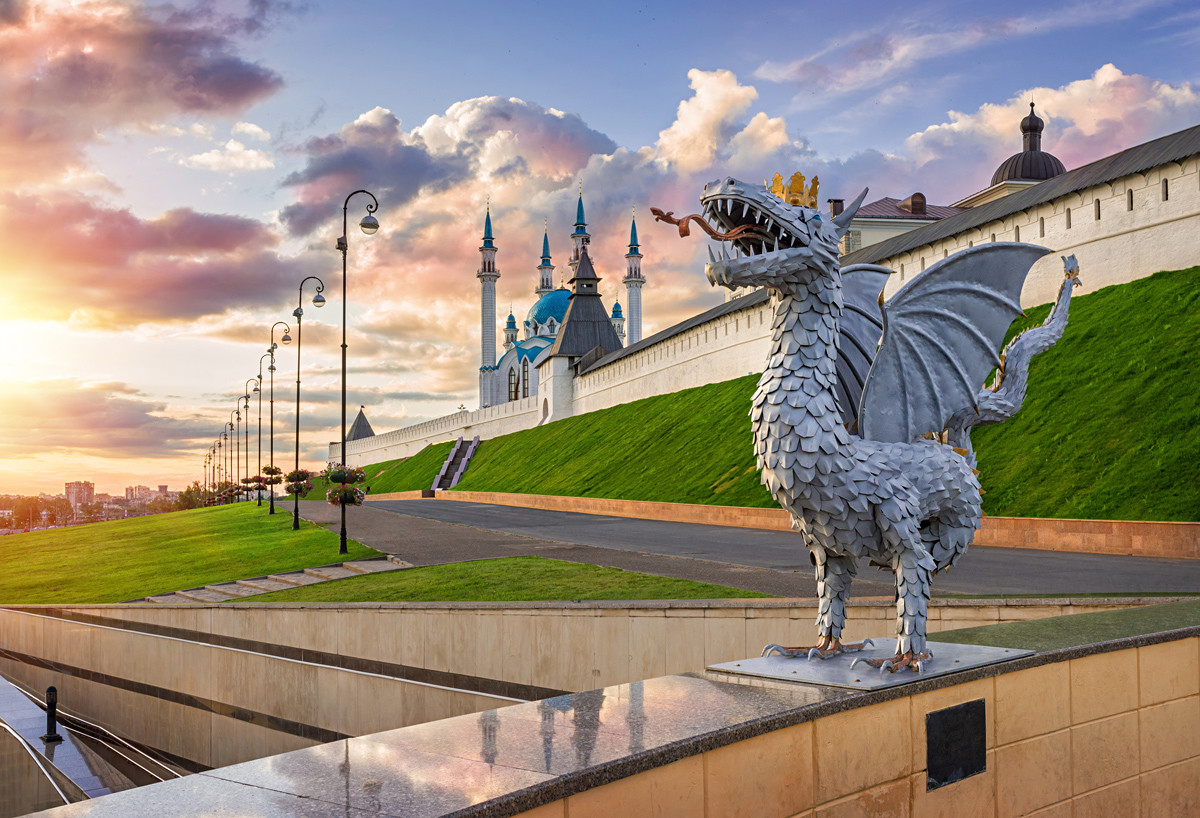
How to get there: 2 hours by plane or 14 hours by train from Moscow’s Kazan Station
When to go: April – October
What to see: Kazan Kremlin (and Kul Sharif Mosque inside it), Kremlevskaya Naberezhnaya street, Tatar Sloboda Museum, Bauman pedestrian street, Bulak River embankment
Where to stay: Hotel Kazan Arena Stadium
Where to eat: Any restaurant serving Tatar cuisine; the sweet dish çäkçäk (pronounced “chak-chak”) is a must
4. Volgograd
This is the legendary Stalingrad by a different name. A city of military glory, which endured one of the bloodiest battles of WWII and in the history of mankind. Head to Mamayev Kurgan, where the epic statue The Motherland Calls proudly stands. (And before the trip, you might like to watch Enemy at the Gates with Jude Law and the Russian movie Stalingrad.)
Perfect snap (The Motherland Calls monument):

How to get there: By plane from Moscow
When NOT to go: On May 9, because Victory Day is a very crowded affair; also bear in mind that summer gets very hot down here.
What to see: Mamayev Kurgan and The Motherland Calls monument, Battle of Stalingrad Museum Panorama, Pavlov House, Volga embankment
Where to stay: Hotel Volgograd
Where to eat: Marusya and Knyagininsky Dvor restaurants, Schastie Yest delicatessen
5. Yekaterinburg
Here you can see the Europe-Asia obelisk, which marks the border between the two continents (although the exact location is disputed by geographers). The city has interesting architecture—a mix of Soviet constructivism, eclecticism and baroque. But above all, Yekaterinburg is infamous for the execution of Nicholas II and his family, who were shot here in 1918.
Perfect snap (Sevastyanov House):

How to get there: By plane from Moscow; by bus or train from Perm
When to go: May – September
What to see: The Church on the Blood, Ipatiev House, the Yeltsin Center, Sevastyanov House, Literary Quarter Park, the constructivist buildings of Chekist Town outside the city, Ganina Yama Monastery.
Where to stay: Hotel Vysotsky
Where to eat: Troyekurov, Stroganov Grill, Pashtet
6. Perm
Over the past decade, the city has rightfully earned its status as the cultural capital of the Urals. It is home to the PERMM Museum of Modern Art — the brainchild of renowned gallery owner Marat Gelman, while Theater-Theater shows modern experimental productions. The city’s motto is “Happiness is round the corner,” and an art object with this inscription stands on the embankment of the Kama River.
Perfect snap: (“Happiness is round the corner” art installation)

How to get there: By plane, bus or train from Yekaterinburg
When to go: May – September
What to see: Kama River embankment, PERMM Museum, Museum of Perm Antiquities, Perm-36 Museum of Political Repressions, Perm Mosque, Trinity Cathedral, Permskaya street, the Permyak Salty Ears urban sculpture
Where to stay: Marmalad and Prikamye hotels
Where to eat: Pelmennaya (“Dumpling Bar”) №2, Permskaya Kukhnya (“Perm Cuisine”) restaurant. Try the dumplings, posikunchiki (fried pasties) and beef Stroganoff
7. Krasnoyarsk
This city embodies the full might of Siberia with its vast open spaces, majestic Yenisei River and jaw-dropping nature. In winter, the temperature here can fall below -30 C, but the air is very dry, so it’s not as bad as -20 C in Moscow or St Petersburg. Incidentally, in the city center, there are tents with warm mittens and socks—don’t miss them!
Perfect snap: (Communal Bridge)
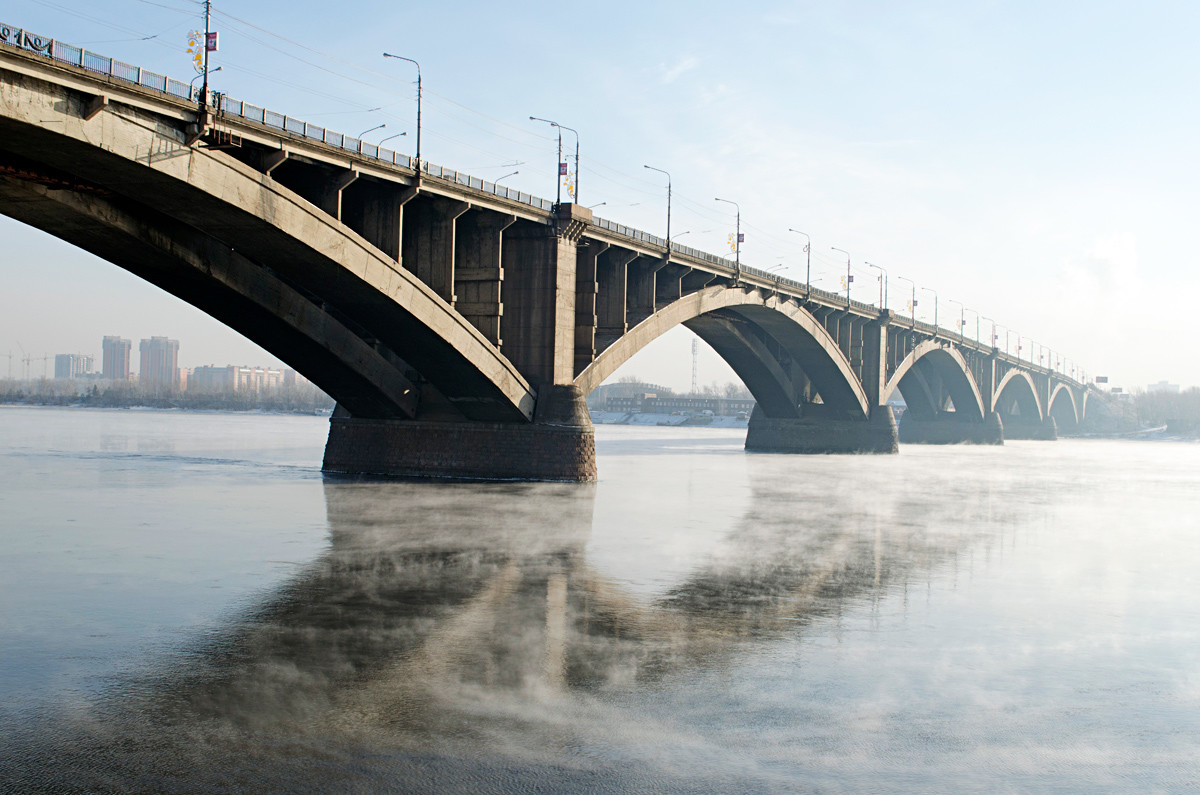
How to get there: By plane or the Trans-Siberian Railway
When to go: May – September; or Sheregesh Ski Resort from December to April
What to see: Communal Bridge, Krasnoyarsk Regional Museum, Yenisei River embankment, Prospekt Mira avenue, Peace Square Museum Center. Out of town: Krasnoyarsk Hydroelectric Plant, Krasnoyarsk Pillars Nature Reserve
Where to stay: Oktyabrskaya and Sibir hotels
Where to eat: Khozyain Taigi (“Master of the Taiga”) restaurant, Balkon (“Balcony”) river bar
8. Vladivostok
Journey to the edge of the Earth and look the ocean in the eye—a priceless feeling. Vladivostok will welcome you with the very freshest seafood, large ships, and breathtaking bridges. The proximity of Asia is tangible—from the street food (try the Pyanse steamed pies) to the right-hand drive cars from Japan and the abundance of Korean cosmetics.
Perfect snap: (Tokarev Lighthouse)
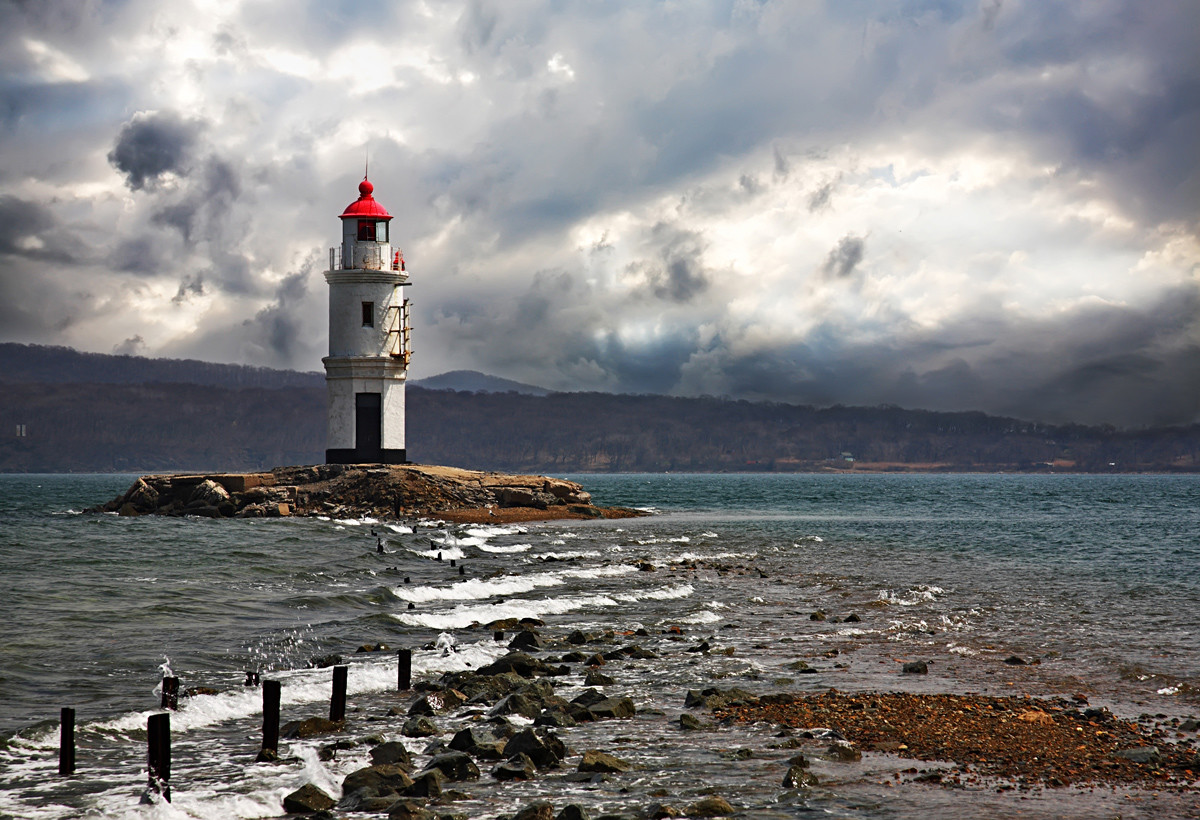
How to get there: By plane or the Trans-Siberian Railway
When to go: May – October
What to see: Golden Horn Bay, Svetlanskaya Street, Tsarevich Nicholas Arch, Admiral Fokin Street, Jubilee Beach, Tokarev Lighthouse, V.K. Arsenev Museum, Russian Island Aquarium
Where to stay: Astoria and Azimut hotels
Where to eat: Zuma, Pyaty Okean (“Fifth Ocean”). You won’t go wrong with Kamchatka crab
9. Kislovodsk
Here you can try the healing mineral water (the most popular local brand is Narzan), stroll along the mountain paths of the Caucasus, and relax in an atmospheric Soviet sanatorium. There's no need to limit yourself to Kislovodsk either—take a trip to neighboring Pyatigorsk (where the great Russian poet Mikhail Lermontov died in a duel) or Essentuki, the home of another famous Russian mineral water.
Perfect snap: (Narzan Gallery)

How to get there: By plane to Mineralnye Vody Airport, and from there by taxi or train
When to go: June – September
What to see: Narzan Gallery, Kurortny Boulevard, the cableway, Cascade Stairs, Chaliapin’s dacha, the Flower Calendar horticultural monument, the Kislovodsk terrain courses
Where to stay: Any sanatorium
Where to eat: You should definitely try some delicious Caucasus cuisine at the Shashlyk-Mashlyk, Ogonyok and Barashka restaurants
10. Sochi
Sochi is a unique place that offers both sea and ski holidays. Not at the same time, admittedly. The beaches here stretch for many kilometers along the sea, so you don't need to stay in the city itself; other options include Tuapse and Lazarevsky.
Perfect snap: (Olympic Village)

How to get there: By plane or train from Moscow to Adler, then by suburban train, taxi or car share to Sochi or Krasnaya Polyana
When to go: May – September for the sea; December – March for the mountains
What to see: Olympic Village, the Formula One circuit, the cableway, Dendrary Botanical Garden, Stalin’s dacha, Sky Park, Poza Hall, Naberezhnaya Lavanda street
Where to stay: Tsitrus (“Citrus”) and Zhemchuzhina (“Pearl”) hotels, Swissôtel Resort Kamelia
Where to eat: Try the mouthwatering fish, meat shashlik (kebab), and other Caucasus dishes, such as chebureki (deep-fried turnovers) at Promenade, Red Buffet, Krasnaya Polyana cafe, and Vysota 2320 restaurant.
By the way, don’t worry if you haven’t been to Moscow or St. Pete. Most likely, you’ll have to go there first to get anywhere else. Book a flight with a long layover and have time to see all the main sights in our guides!
And if you don’t know how to get a visa, see here for some handy instructions>>>
If using any of Russia Beyond's content, partly or in full, always provide an active hyperlink to the original material.
Subscribe
to our newsletter!
Get the week's best stories straight to your inbox